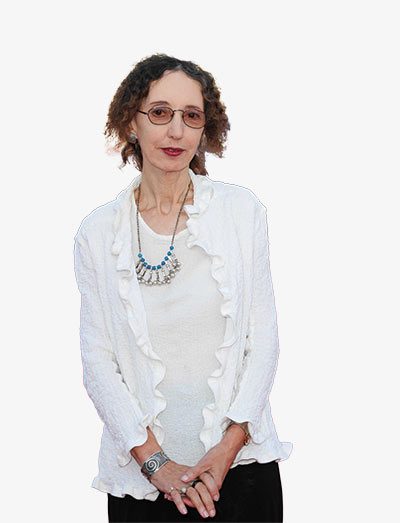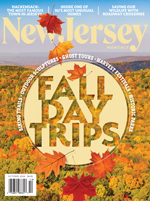
The author of more than 50 novels, Joyce Carol Oates is a creative-writing professor at Princeton University and has called Princeton home for more than three decades. Oates—an acclaimed figure who also writes plays, poetry, short stories and literary criticism, and is a current nominee for the New Jersey Hall of Fame—is the editor of New Jersey Noir (Akashic Books), a new collection of short stories and poems set in Garden State locations such as Montclair, Cherry Hill and Asbury Park. The pieces were written by the likes of Jonathan Safran Foer, Robert Pinsky and Edmund White. All the photographs are by Paterson photographer Gerald Slota. (Click here to read a review of the book she recently edited.)
Why did you decide to edit this book?
The series editor, Johnny Temple, had invited me, and since I love gathering disparate work into collections, it seemed like a challenging and interesting project.
How would you describe the book?
New Jersey Noir is a gathering of works of prose fiction, poetry and art that reflect a noir—that is, a genre—sensibility. These are not necessarily realistic or naturalistic works, though they may have strong elements of social and psychological realism.
How did you choose the contributors?
I invited writers with ties to New Jersey to contribute an original noir work.
Do you have any favorite selections?
Among my own favorites in the collection is the stunning, captivating, and utterly convincing “Live for Today” by S.A. Solomon, who sent the story to Johnny Temple when she’d heard that he was preparing a New Jersey noir volume. Set in a morgue in Newark, this story by a writer unknown to me was so riveting, I knew immediately that it would find a place in the anthology, and [it] confirmed my sense of the excitement of such editing, in which unexpected discoveries await.
How would you define noir?
Noir is a tone, a sensibility, an atmosphere—it is a dark vision that underlies the glib surfaces of day. Noir often turns upon plot, upon the dramatic conflation of character and setting, which is the case with most of these stories.
Is New Jersey a perfect setting for noir?
Perhaps many states of the United States are perfect settings for the noir sensibility—California, New York and Louisiana certainly come to mind—but New Jersey seemed ideal, as my preface suggests.
Jonathan Safran Foer’s story in the collection is set in Princeton. Does he capture the essence of your town? What is the essence of Princeton?
The university is comprised of thousands of individuals, many from foreign countries. Jonathan’s story is primarily about estrangement within the too-near real and could be set virtually everywhere; but since Jonathan knows Princeton from having been a student here for four years, he set it here.
How do you think an outsider’s view of New Jersey differs from that of New Jerseyans?
I have no idea how people in Idaho regard us. Most people’s views of others are cliches and not really worth investigating. That is why art attempts some complexity of portraiture.
You’ve lived in New Jersey for many years. Do you feel like a New Jerseyan?
I feel like an American who has been transplanted from upstate New York to Detroit, Michigan; to Windsor, Ontario, Canada—and now to Princeton. Many or most of my friends are not native to New Jersey, still less to Princeton. It seems like an old-fashioned notion that we feel in some relationship to a place; in contemporary America, people move about easily and travel frequently and have friends from far-flung parts of the world. It is not 19th-century bucolic Princeton any longer, and what a good thing!



